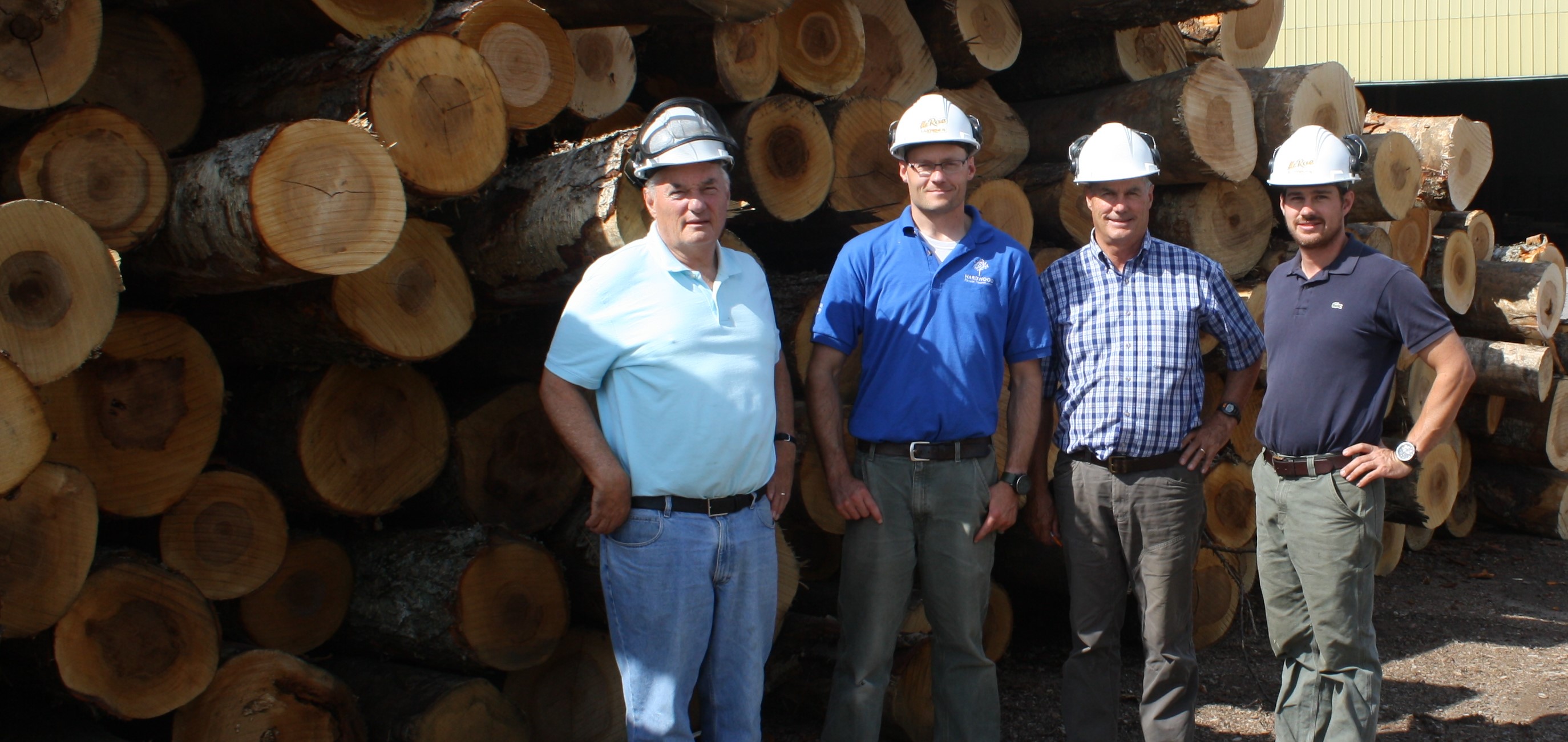Because Forestry is our History.
I say this not just as it relates to our family, but also to the local area, our province and Canada as a whole. Canada’s forest industry was born as a result of the Napoleonic wars, and the need for timber to build warships. As a result lumber camps sprang up throughout Eastern Canada to harvest the white pine and ship it back to Britain. This was the beginning of the Forestry Industry in the Ottawa Valley and Central Ontario.
Over the next few decades, the industry produced primarily square timber. However an evolution was underway towards an industry based primarily on sawmilling the timber into products to supply the growing Canadian and American domestic building market. It was into this changing industry that our family first entered into the world of lumbermen. Our great-great grandfather John Duncan McRae was the first in our family to own and run a sawmill. His operation was located in Eganville, Ontario and operated from the early 1890’s up until the disastrous Eganville fire of 1911. After the fire, which consumed the sawmill and much of the town, his son J.S.L. McRae moved to Whitney, Ontario and purchased a sawmill from the Mickle & Dyment Lumber Co. on Galeairy Lake.

Throughout the 1900’s there was a steady pace of change and evolution in the forest industry. The drive towards mechanization, changed the workforce and how rural communities functioned. The life of men going to spend all winter in the forest away from their families began to slowly fade into history. In place of shanty camps and horses came the chainsaw and skidder, with men driving into the forest for the work day.
These changes played out against the backdrop of changes in our society and how we view and interact with the forest. With the increase in vehicle use and the development of roads came the ability for more people to explore areas that were previously difficult to access. The ease and simplicity afforded by the increase in mechanization helped to soften the edge of nature and allow for greater access. With greater public access came opportunities for conflict over how resources should be utilized.
Our wood basket has always been the area in and around Algonquin Park. Over the past century we’ve seen a great deal of conflict but, fortunately, we’ve also seen greater instances of resolution. The greatest aid to conflict resolution also arose as a result of the evolution within society and the forest industry.
The rise of forestry science and the systematic management of the forest was instrumental in helping to quell many of the debates. The ability to manage for a host of different values and interests has allowed for the three pillars of a sustainable forest to flourish. The equal values of environment, economy and recreation help to define the sustainable forest industry of Canada.
The continuing change in how the broader population views the forest continues to this day. As technology has helped to bring the forest closer through increased information and ease of access, society has never been further away from actual forests. The steady urbanization of our population has created a deepening gulf between the rural lives of our ancestors and our present day selves. These two solitudes; rural and urban, continue to play a major role in public policy and resource and land management. In our wood basket of Algonquin Park, information regarding forestry is sometimes difficult to for people to see through the static of preconceived opinion. This static is an effect of the evolution within our society, as we mechanize and urbanize, we lose touch with nature and our views as to what nature is and how it is to be managed start to change.
Our first timber license that included land within Algonquin Park was issued in 1893, which was the same year the park was created. So, in many ways, we’ve always been tied to Algonquin. We still currently harvest timber from Algonquin and have done so for the past 123 years. We’ve had 7 different sawmills over the years, including 2 inside Algonquin Park. With our current mill just outside Algonquin’s East Gate in the town of Whitney. We often think that the length of time we’ve spent on the same landbase, going back to the same stands every 25 or 30 years is one of the greatest arguments we can give for the sustainability of Canadian Forestry. The same forests we remember visiting as children to see the logging operations are the ones we are harvesting now. The local forest has provided the livelihood for five generations of our family and we believe we could see many more.
There is a great future for forestry in Canada. The environmental benefits of using wood are tremendous, whether it is in building materials, home furnishings or heating and electrical production.
The opportunity to be a green industry leader is a great challenge, but one that is achievable. As well, despite the years of increased mechanization, the forest industry is still a major user of labour and that producing wood for the market requires lots of people working. The ability to be the green choice producing local products made by your friends and neighbors is a great story and one that we all need to communicate as much as possible.
We can all be proud to be part of the forest industry. We are the stewards of our resource, as we ensure the viability of our forests for the next generation.
We must all Stand up For Forestry.
Because Forestry is our Future


